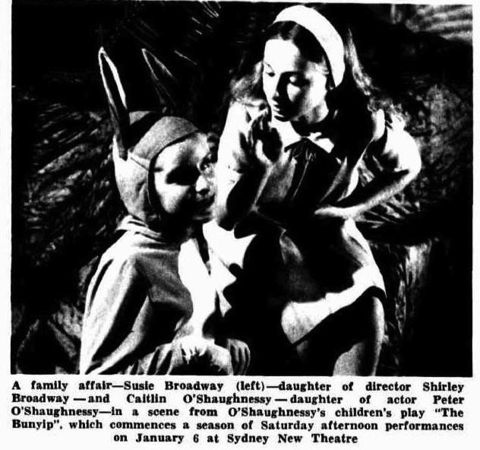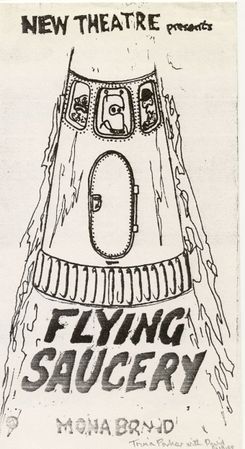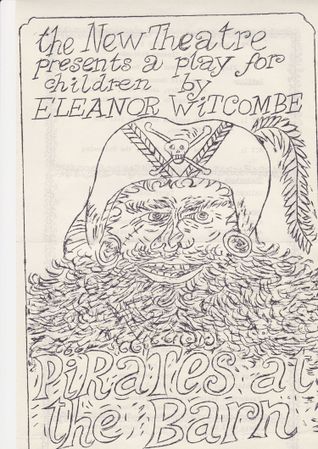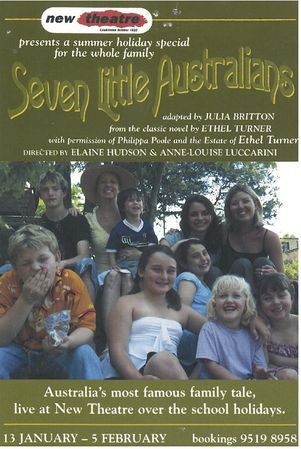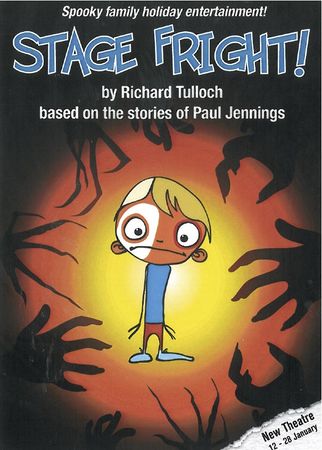Difference between revisions of "Children's Theatre"
(No difference)
| |
Latest revision as of 15:00, 8 April 2021
New Theatre History Home | Previous: Mardi Gras | Next: Workshops, Readings and Special Events
In Jubilee year 1951, in a “new move” for New Theatre, Ruth Sriber began organising a children’s theatre committee. The first show was her production of The Emperor’s New Clothes in which she also danced.
Young audience members were encouraged to write to the theatre giving their opinions. Another fairy story, The Travelling Musicians, with original music by Ross Thomas and designed by David Milliss, was staged in 1952. Peter Francis, who had choreographed the first show, played Mr Rooster. Neville Swanson was Robber Number Two. David Futcher, who began his acting career with the Mosman Children’s Theatre, played Slappy, while Ruth Sriber’s husband Charles played The Donkey.
True to its name, The Travelling Musicians made forays into the suburbs -- Bankstown, Mortdale, North Sydney -- and by mid-1952 had brought in double the profits of either mainstage production Sky Without Birds or School for Wives. However, most of the people involved with these early shows also sat on main committees juggling time around their day jobs, and the children’s theatre committee soon collapsed. An approach to the Women’s Auxiliary of the WWF amounted to nothing and a period of 14 years elapsed before another children’s play was mounted.
In 1966 at St Peters Lane Eleanor Witcombe’s Smugglers Beware! played Saturday matinees in a long run involving several cast changes and a move from imperial to decimal currency.
The driving force behind this production was its director Alan Herbert (Channel 7’s “Captain Fortune”) who believed shows for children were an important aspect of the theatre’s work, bringing in finance and future audiences. Tooth’s brewery and Rothman’s supplied the barrels and Schimmelpenninck the cigars used in the show.
Despite problems finding rehearsal and storage space and having to bump in and out with each matinee performance and unplug and re-plug power outlets for sound and lights, the children’s project continued under a revived committee (Christine Shaw, John Rowland, Margaret Mannerly and Alfred Lewis). Eleanor Witcombe’s Pirates at the Barn had a three-month run 1966-7.
The cast, who chatted with audience members after the show, included Linal Haft and Alan Hardy.
The 1968 show was Peter O’Shaughnessy’s Mumba Jumba and the Bunyip directed by Shirley Broadway who ran regular drama classes for young people. A musical with lyrics by Barry Humphries, it intertwined Aboriginal legends to deliver a pacifist message and an appeal for the protection of the bush.
After an opening night “shambles” because of technical problems, the show settled into a long run with understudies rotating some of the roles. Scanlen’s Sweets supplied confectionery for the party scene.
In 1969 Eleanor Witcombe’s The Bushranger was staged, with a set designed to fit inside that of the mainstage play and an outside space, premises of the BWIU, used for rehearsals.
Its director was John Barnard who had come to Australia with the Old Vic Company in 1948. As usual, no closing performance was advertised in advance, the decision being made when it was felt audience numbers were falling. Its successor, The Hunters and the Henwife, had difficulties and did poor business with only a short season.
In 1970 Mona Brand’s Flying Saucery was staged, directed by Judy Finlason and designed by Trina Parker.
The popular show was technically complicated and featured strobe lighting, adding to the usual problems of the changeover from matinee to evening show.
Despite misgivings that children’s shows were not fully appreciated or regarded as major productions, Judy Finlason in 1971 directed John Mulligan’s The Magic Travel Box which featured members of the theatre’s Creative Workshop for Children, including nine- year -old Simon Burke. Judy initiated a “Sponsor a Child” campaign to subsidise under-privileged audiences.
Stephen Gard, the show’s musical composer, wrote the words and music of Darryl the Dismal Demon’s Dawning Day which he also directed. This was the last children’s show at St Peters Lane. His You Should Have Seen Us on Venus or a Hug for the Grug, directed by Judy Finlason, opened in late 1973 playing Saturday and Sunday matinees at the theatre’s new home in Newtown.
The cast included members of the New Theatre Youth Workshop, the Manton family contributing four young participants. In 1974 The Magic Travel Box was revived, Judy Finlason again directing with Stephen Gard as musical director.
Supported by the Australian Council for the Arts, the New at Newtown provided after-school activities such as drama, puppetry, painting, folk dancing and woodwork. But there were problems with the premises being used as both a theatre and community centre, and undisciplined local children, some on roller skates, running around the foyer and across the stage and making a mess in the rehearsal room. Some key figures at NT then set up KAN (Kids’ Activities at Newtown) operating out of a “magic yellow bus”.
John Mulligan’s Chollobonga directed by Joy Browne played Saturday matinees in 1975. 1976 saw the revival of Smugglers Beware! and Pirates at the Barn was staged in 1978.
In 1980 Mona Brand’s The Three Secrets was directed by Gregg Levy whose father Jock had joined the NTL in the 1930s. After Wally the Wheeler, presented by the Bread and Circus Theatre in 1981, children’s theatre lapsed, apart from David Smith-White’s Kangaroo Court which had four performances as part of the 1986 Festival of Sydney.
From 2004 – 13 the annual January slot was reserved for children’s shows, beginning with Hating Alison Ashley and an associated book signing by local illustrators.
Ethel Turner’s descendants attended the 2005 opening night of Seven Little Australians, its cast including a toddler and Jessica Tovey. Packed houses also greeted Spike Milligan’s Badjelly the Witch in 2006, remounted the following year.
Morris Gleitzman's Second Childhood was staged in 2008. The same year a lavish production of Roald Dahl’s James and the Giant Peach proved popular. Dahl was also the author of The Witches in 2009. The 2010 production was Midnite adapted by Richard Tulloch from Randolph Stow’s novel, followed by Arabian Nights in 2011 and Stage Fright! in 2012, Paul Jennings stories dramatised by Richard Tulloch, its cast including Gideon Cordover. The 2013 show was David Holman’s The Small Poppies.
A children’s variety show Saturday Kids’ Club was staged monthly throughout 2007 and less frequently as the Kids’ Club until December 2010.
New Theatre History Home | Previous: Mardi Gras | Next: Workshops, Readings and Special Events









